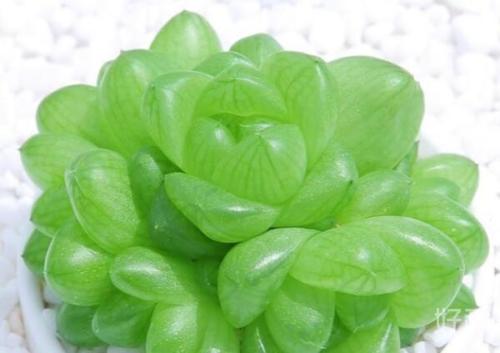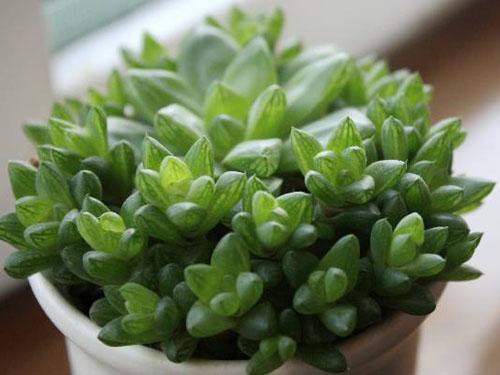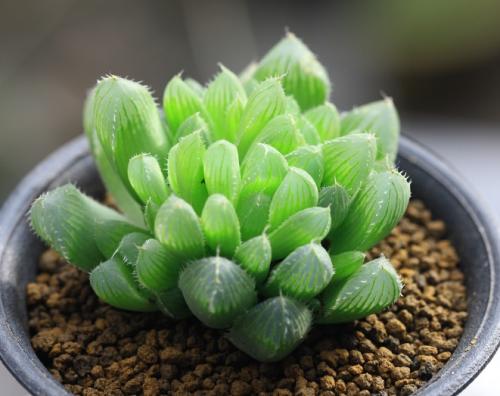How to grow Haworthia obtusa
Written by Maggie
Aug 10 2021

In the process of breeding Haworthia obtusa, give its adequate illumination. Generally it needs to be farmed in garden soil, perlite, coal cinder mix of loose soil. We need not fertilize it at ordinary times, but a rotten organic fertilizer rate every half a month during growing can be applied, and we can make its full basin, often watered once every other week, beneficial to plant growth.

1. Get plenty of light for Haworthia Obtusa
Haworthia Obtusa likes light in succulors, so it needs to be placed in a sunny place to better obtain soil nutrients and increase its ornamental value. However, it cannot be maintained under strong light, so it needs to be placed in a cool and ventilated place in summer.
2. Loose soil for Haworthia Obtusa
In the cultivation method and precautions for Haworthia Obtusa, it is necessary to prepare a suitable soil as the substrate for Haworthia Obtusa, which needs to grow in loose, breathable and well-drained soil. We can mix the cultivation substrate with garden soil, perlite and cinder at a ratio of 4:3:3.
3. Fertilize and water for Haworthia Obtusa
Generally, Haworthia Obtusa does not have a high demand for nutrients and can grow normally even without fertilization. However, if the mature organic fertilizer is applied every half a month during the period of vigorous growth, it can fill the basin to the brim. Usually, it should be watered once every other week and wait for the soil to dry.

4. Plant separation and propagation for Haworthia Obtusa
Haworthia Obtusa is highly adaptive to the environment. However, each plant separation should be carried out in spring and autumn. The plant separation of haworthia obtusa should be separated from the root of Haworthia Obtusa, and then placed in a cool and ventilated place, waiting for the wound of the plant separation to dry, which can be planted in suitable soil for careful maintenance.
5. Notes for breeding Haworthia Obtusa
Generally, in the process of growth, it is better to control the temperature at 15 ~ 23℃, so as to make it grow better. However, in winter, it is necessary to control the temperature and keep warm. The temperature should be controlled above 5℃, so that the plant can safely spend the cold winter and prevent frostbite.

Latest Updated
- Benefits of Bugleweed - 7 Science-backed Health Benefits
- Bugleweed Dangers & Side Effects - Is It Poisonous?
- How to Plant Evergreen Trees - What You Should Know
- When to Plant Evergreens - Grow Guide for Evergreen Trees
- 12 Wonderful Evergreen Shrubs for Your Garden
- 12 Popular Evergreen Plants with Pictures for Beginners
- When And How To Prune A Lilac Bush Like a Pro
- How to Grow & Care for Lilac Vine (Hardenbergia Violacea)
- Japanese Lilac Tree (Syringa Reticulata) Care & Propagation Guide
- Shumard Oak Pros and Cons - What to Know
Popular Articles
- Winter maintenance of Antirrhinum Majus
- How to Grow Terminalia Mantaly Tree
- How to Grow and Care for Crossostephium Chinense
- How to grow Antirrhinum Majus in spring
- Peristeria Elata (Dove Orchid) Profile: Info & Care Guide
- Underwatered Snake Plant (Sansevieria Trifasciata) - Signs And How To Fix
- How to Care for Brazilian Jasmine Plant (Mandevilla Sanderi)
- How to Grow & Care for Graptopetalum Purple Delight in Summer
- Rosa Chinensis (China Rose): Plant Growing & Care Tips
- How to Care for Baby Sun Rose (Aptenia Cordifolia)